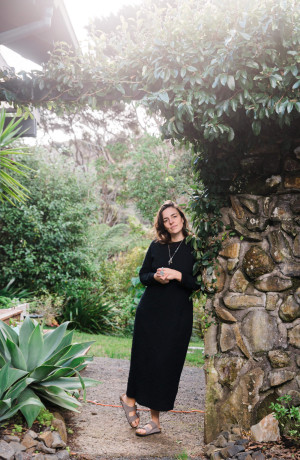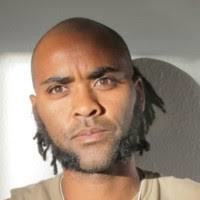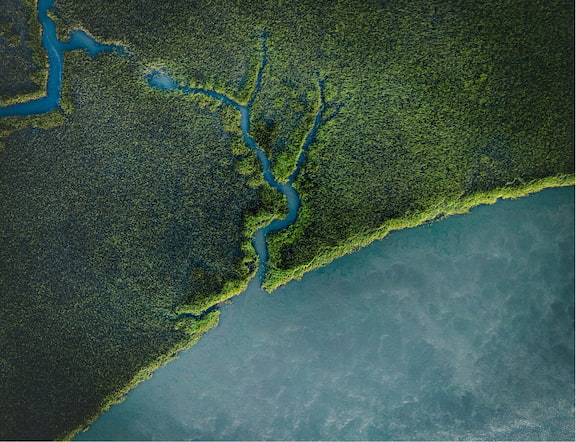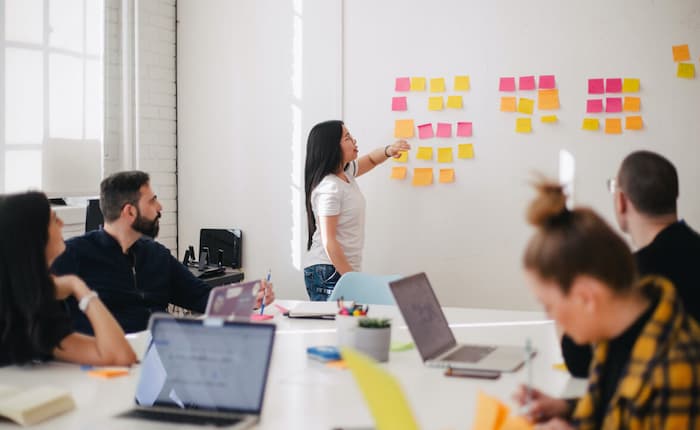Introduction
Welcome to Visualising the Field - a dynamic, visual tool connecting multiple practitioners and organisations across a vast range of approaches, ways of knowing and sectors in the ever growing field of systems change practice. It can be thought of as a visual rolodex connecting people and organisations by systems keywords made available from publicly available information. This is an important distinction: this is a mapping affinities of shared approaches, rather than social relationships.

Our ambition is to foster collaboration and knowledge sharing. The data has originated from a core network and has grown through a snowball method of recommendations since 2021 and updated by a team of community curators in different geographic areas. We’re hoping that by representing this vast information across people and organisations visually it can support curiosity, connections and collaborations.
This map is designed to grow over time. If you have a systemic practice, and would like to be included or to recommend others, please just click here and fill out the form. For each person or organisation, we gathered publicly available information online - from LinkedIn profiles or websites, and from the descriptions and text we tag them with a dictionary of systems change terms and other keywords.

Ambitions for 2024
Stewarded by Saskia Rysenbry and Abdul Dube in 2024, our ambitions are to increase practitioners and organisations from previously under represented geographies through a small team of community curators. We're also looking forward to connecting in with networks and places on how this map can be useful in field building and sensemaking, and hosting learning sessions from April.
How to use this map
Here are some quick tutorials on how to use the map from Saskia and Abdul. At the end we've included a longer tutorial from Eric at Vibrant Data Labs.

1. Introducing the map with Saskia and Abdul. A quick intro explaining what this map is and why we've made it, our ambitions and how to add people/organisations → View
2. Using the map:
- Nodes - click on any node (or point) to display details about the person or organisation, and see data attributes. Click on the white space to clear the selection → View
- Snapshots - choose different perspectives of the data via the snapshot selector, viewing Emergent Systems Themes or geographic location → View
- Summaries - explore data attributes and filter selections to gain insights across various categories like systems tags, keywords, professions, skills, and more → View
- Search - using the searchbar to search for a person or organisation → View
3. Why might we use this map? Specific activities/actions eg combining systems keywords, combining data like systems keywords and location, and more → View
4. A more detailed tutorial and understanding the data and functions of the map from Eric Berlow at Vibrant Data Labs → View

Community curators

Hansika Singh, managed garment sourcing for H&M in India and Sri Lanka before transitioning to sustainable development, earning a Master’s from Azim Premji University. With a decade of experience, she led projects in Education, Consumption, Governance, Mobility, Pollution, Gender, and Livelihoods. Recognized by FRIDA for climate justice, she has most recently supported Forum in collaborative sustainability efforts, inspired by grassroots movements.
→ See Hansika's LinkedIn profile

Nicole Biondi, a passionate advocate for social and environmental justice, excels in strategy consulting, coaching, and championing early childhood development and climate action. With expertise in nonprofit strategy and senior leadership, she serves on multiple boards, including Vice-Chairperson of Global Think Tank, Capita, and others like Games for Change Africa. Nicole's global influence spans seven industries, showcased through keynote speeches worldwide, from Macau to California, rooted in Cape Town.
→ See Nicole's LinkedIn profile

Stephanie Arrowsmith is a facilitator social innovation, systems change, and climate action in the Asia-Pacific. As a senior associate at Impact Hub and APAC Regional Innovation Enabler for WWF, she fosters collaborative partnerships, organizational transformation, and innovation programs. An advocate for inclusive entrepreneurship and climate action, Stephanie is a Terra climate action fellow, certified yoga instructor, and member of diverse changemaking communities. Originally from Indonesia and Australia, she now resides in Thailand.
→ See Stephanie's LinkedIn profile
Sensemaking
What is the narrative that is emerging?
There is no one way to do systems change, and that there are an incredibly diverse set of actors working within the field.
→ How are we helping the field to see itself?
The field is bigger than expected, even if the map is at the moment concentrated in Europe and North America.
→ How are we connecting in with different geographies?
This map could have the danger of reinforcing dominance within the field.
→ How are we checking in and making sure we decolonising and redistributing power, rather than reinforcing historical dominance?
How is it useful?
Firstly, it is a helpful tool for dialogue amongst systems change field-builders, to help us collectively explore the language we’re using in the field, and how the field as a whole is evolving. It’s important to state that we are not trying to discover anything - we are hoping to help the field see itself - and when there are obvious gaps or concentrations of practice, we can take actions to move in different directions.
Secondly, as practitioners, it is helpful for identifying other individuals who might have strong affinities with our own work and that we aren’t connected to, or people who are working in a way that is complementary to our own approaches. The search functions on the map work well to narrow down from several hundred people to a bunch of individuals using keywords.
What are some concerns?
There are several concerns or complications that have emerged from the first stage of mapping. These have been lifted up during a sense-making conversation with the Illuminate stewardship group.
This map is haunted: who sees this map? Who isn’t on this map? How can this map be used as a tool and not something destructive? The initial snowball method starting from within a small group has led to a concentration of practitioners and organisations based in Europe and North America, which is already an issue in this fragmented field.
Accuracy of the data: We’ll start by saying, there will always be some errors in the data, by the nature of how we’re collecting it. What we’re creating is an imperfect, updatable map. And although the data is gleaned from live webpages and profiles, we cannot guarantee that this is the way practitioners would describe themselves if asked to present their work.
Does this have a danger of reinforcing the biases of the field? Does this dictionary of terms force people to use language that they may not have been using before? What is the historical lineage of this vocabulary, and what are some other lineages? We are trying to overcome this by letting the language of how people describe what they do to help define the field - the important part is having diverse people captured, so language can help broaden the definition.
This has been pulled from our sensemaking piece with Illuminate, who this map was initially in partnership with. You can read the full piece here.
FAQ
Data sources, information and issues
Where does the data come from?
We ask for recommendations from systems practitioners and community curators, and the data comes primarily from LinkedIn, and from organisation/professional websites.
How do people and organisations get included on this map?
In 2021 we started with a snowball method, where we asked a small group of practitioners to recommend other practitioners and organisations, and then asked those people for recommendations, and so on. We supplemented this with manual research. In 2023/2024, we are working with community curators to support connecting in witth practitioners and organisations in other regions.
How are people/organisations connected?
People and organizations are linked if they have similar approches to their practice. Data for each person and organization where gathered by collecting publicly available information. They where then tagged with systems change terms and other keywords from a curated corpus of terms by searching the full text of their profiles for mentions of those terms. People/Orgs were tagged with where in the world they work or have worked by searching through their profiles for any mentions of geographic place names. The geographic location for where each is based was derived from the city and/or country mentioned in their LinkedIn title. These were then geo-coded using the Google Maps API to derive latitude and longitude for mapping. Note that for some people - the geography in their title very broad (e.g. 'United States'), so their location on the map will be similarly coarse.
What are the systems terms?
We created a systems change corpus - a list including systems change terms, professions and keywords that describe practice and field. We then used techniques from network theory and machine learning and let people and organisations self-huddle into Emergent Systems Themes - connected by these terms. Check out the systems terms.
What are the clusters (“Emergent Systems Themes”)? How are clusters formed?
Every data point on this map represents a person or organisation, and the clusters are these data points sharing connections with systems terms. These themes are not defined in advance, but rather coalesce automatically - using machine learning - from the shared language of how each person/organisation describes what they do.
Why am I/my organisation not on the map? Or why is there a person/organisation that shouldn't be on there?
Thanks for noticing! This map is new and always changing, and not intended to be a picture of the whole field. We rely on practitioners, communitty curators and research and is intended to reveal overall trends, rather than a complete database of the field. That said, we are constantly improving our methods and would love your feedback! If you notice something missing or something that doesn’t belong, please let us know!
How can I update the data of a person or organisation?
We don't add data manually to this map, rather we use what's publicly available on LinkedIn profiles (and sometimes organisation/professional pages). If the data on the map is wrong, check to see if it can be updated on LinkedIn, which will then be updated when we do another update of the map.
Can I delete, change, or add data?
There is not currently a process for users to make any data updates or data additions on the fly, the best way is to make sure the underlying data is correct on LinkedIn. If you have further questions about this, send us an email.
How to use this map
How do I use this map?
The Data Filters on the left (under the Summary tab) enable you to slice and dice the data any way you want. The Snapshot Selector at the top offers a selection of saved presets that enable you to explore different perspectives of the same data. You can click on an individual data point to view people/organisation details. You can search via the Search bar at the top. Learn more about each feature in depth below.
Video coming soon!
How to give feedback, or fix/add something
How can I give feedback, report bugs, or make suggestions?
This map is always changing, and we'd love your feedback or support to make it better! Please email us here or fill out the Airtable form to add people and practitioners.
Something is wrong, how can I update the data?
Please check the data on LinkedIn first, you can update profiles with any systems terms, keywords or professions and when we update next it will run the terms and form the emergent systems themes. If you notice something is still wrong, please let us know!
I would like to partner with you and add practitioners and organisations in a specific region, how can I do this?
We would love to partner with you to build out this map. You can watch the video on the basics of the map, as well as fill out this form as many times as you need to suggest people and organisations. If you'd like to speak to us, please get in touch.
Contact us
We are continuously trying to evolve this map and would love to hear from people who are interested to develop connections in different regions. Please get in touch: [email protected]







